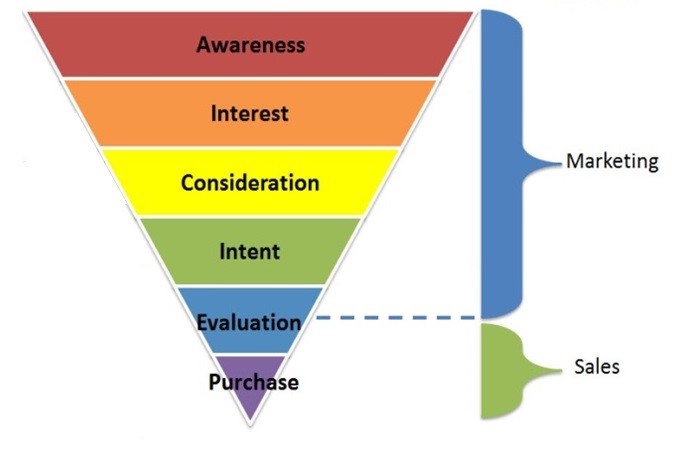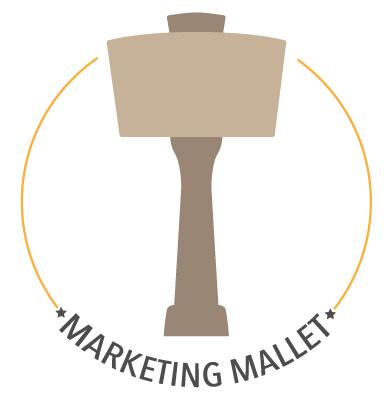Why Your Marketing Funnel is Choking Your Sales Team

We’ve all seen the traditional funnel diagrams showing swarms of enthusiastic prospects, obediently filtering through thoughtfully defined stages and relishing the process of becoming warm, qualified and ready-to-buy prospects.
Why have inbound marketing funnels become so important?
Well, simply because they match the way people buy nowadays. And with such a wealth of information and choice at a single click, why would the customer want it any different.
Sales teams have also evolved, becoming more aligned and focused on the strength & efficiency of inbound marketing.
However, when it comes to marketing funnels, many experts are noticing that not everything is as it seems.


What’s wrong with marketing funnels?
Well, for a start, they’re the wrong shape. The facts suggest they should be much, much top heavier.
More like a mallet shape than a funnel. But I don’t suppose the term ‘marketing mallet’ carries quite the same appeal (give it time).
However, this post isn’t about trivial stuff like shapes being used in diagrams. There’s something much more important to discuss. Like why your marketing funnel is actually throttling your sales team. And what needs to be done to fix that.
Let’s look at some home truths:
Fact # 1: The majority of your prospects do 75-85% of their research before contacting you
Hey, you probably already knew that. Prospects can be sneaky secret squirrels. Burrowing well under the radar. And why not? They’ve got so much information available to them - on your website and your competitors - the truth is, they don’t really need you to give them more.
Just take a look at these typical visit funnels for the UK Finance industry and UK Computers Industry, compliments of ThinkWithGoogle. These examples are for ecommerce websites, but the principles the same for all.
A typical user completes 5 or 6 visits to your website before getting in touch.

Try CANDDi today
Book a demo now
So by the time they get in touch, they’ve already been busy. Very busy. And they’re doing the same with your competitors. Plus who knows what else.
The fact is, they’ve been getting all the information they need. And that’s before they contact you.
Fact # 2: By the time an inbound prospect speaks with your sales team, they’ve already made a decision
Not surprising. The fact is that by the time most prospects get in touch, they already know what they want.
Of course, they never tell you that. But your sales guy (bless him) is often doing little more than simply validating the prospects’ thinking.
Fact # 3: Marketing funnels don’t consider competitors
The truth is, prospects know all about you and your competitors before they even reach your funnel. They know what makes you different. They know your strengths and weaknesses. And they know how to drive you down on price.
You can pretty much tell them what you want. Most of the time, they already know. The rest of the time, they’re not actually that bothered.
Fact # 4: Most companies receive lots of traffic but few enquiries
Regardless of what you read, most websites only hear from around 1% of visitors. Targeted landing pages can earn more. But we’re talking across the board here. And your sales team are expected to wait patiently for that 1%. Whilst the rest of the prospects go and do other stuff. Usually with your competitors.
Fact # 5: Too much pressure comes with inbound opportunities
You’ve driven 1,000 visitors to your website and heard from 5. The pressure’s now on the sales team to win the deals and bag the money. Even though, we now know those prospects have already decided what they’re going to do. You’re just telling them they’re right or giving them a better price.
Fact # 6: Most marketing teams ‘over-nurture’
Even after the prospect gets in touch, there’s a common marketing tendency to nurture them some more. Like one more email click will make all the difference. And if there’s any part of the funnel that’s strangling the sales team, it’s this one. Because the clocks ticking. And behind the scenes, those prospects are being busy. More than likely emailing your competitors as we speak.
What the sales team needs to do to fix this
So, we’ve identified why sales teams should have a beef with marketing funnels.
Firstly, it’s worth pointing out what’s not the answer in this situation:
Try CANDDi today
Book a demo nowFirstly, the answer is not to just drive more traffic to the website. With more traffic commonly comes more cost, poorer quality and lower conversion rates.
Secondly, the answer is not to disturb these prospects before they’re ready. This is the principle that many IP tracking tools like Lead Forensics are born upon. And let’s be honest, nobody likes to be called unless they’ve requested it.
But negatives alone aren’t much use. And at CANDDi we like to be a handy bunch.
So, if you’re responsible for closing deals (and you want to keep your job), here’s what you should be doing:

- List your best 5-10 customers (business names and individuals) that converted in the last 3 months. Rank them in order, best downwards.
- Supply that list to your marketing team (or do yourself if suitable) and access your CANDDi dashboard
- Create a template (excel works well) containing the following fields:
- Source
- Number pages visited
- Landing page
- Key pages visited
- Total number of visits
- Duration between first visit and becoming customer
- Search for each customer in your CANDDI dashboard and complete the template fields for each visit where possible
- Analyse the data for commonalities:
- Sources used?
- Pages visited?
- Number of visits?
- Timeframes?
- Etc
- Hopefully, you’ll begin to see some behavioural trends aligning your top customers. You’ll see what they did on your website before they became customers. And what they’ve done since. (Ps. They might want to buy more).
- Knowing this information can be crucial for your sales pipeline. It’s so important, we’ll call it them ‘Pre-Pipeline Prospects’.
- Next you need to identify who else in your CANDDi dashboard is a Pre-Pipeline Prospect, or developing into one.
- Based on the commonalities you’ve identified for the website behaviour of your best customers, create multiple streams in your CANDDi dashboard identifying visitors who meet all of the Pre-Pipeline behaviour (ready to drop) or part of it (coming in the next few days or weeks).
- Create automated trigger reports (as they happen or daily/weekly) letting you know who’s in the Pre-Prospect Streams at each stage.
- Work with your marketing team to replicate and drive as many prospects as possible through those Pre-Pipeline streams.
- Monitor your Pre-Pipeline prospects before they mature. Follow these streams and pursue all opportunities swiftly.
- Ensure CANDDi is linked with all outbound company emails and integrated with your company CRM (the only visitor software to integrate with all systems)
- After 3 or 6 months, review your ROI.
- Let us know how much your sales volumes have increased by. (We’re building a customer benchmarking report).
Hope that helps and wish you every success!
Onwards & upwards!
